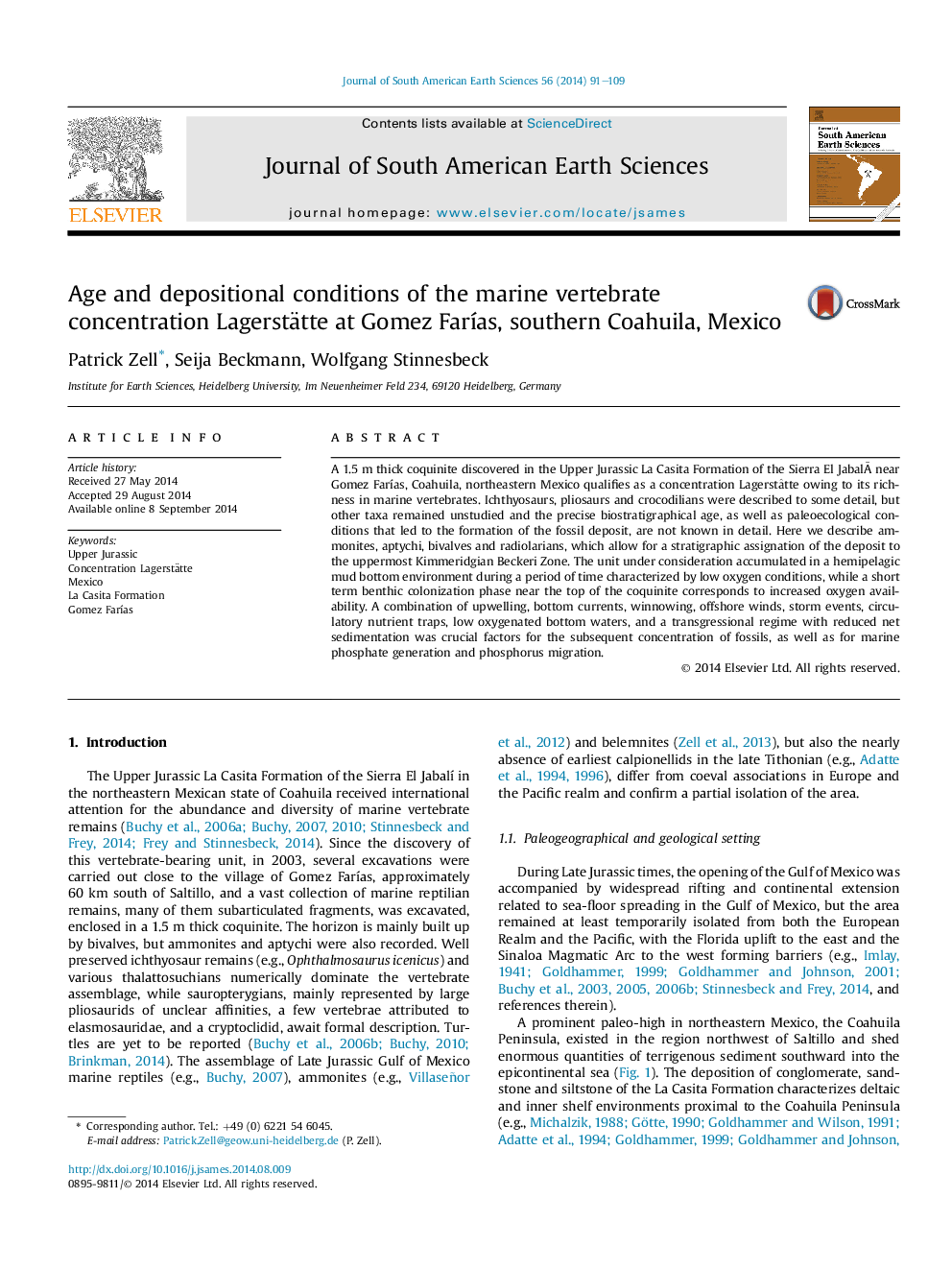| کد مقاله | کد نشریه | سال انتشار | مقاله انگلیسی | نسخه تمام متن |
|---|---|---|---|---|
| 6431364 | 1635153 | 2014 | 19 صفحه PDF | دانلود رایگان |

- We provide data about age and depositional conditions of the marine vertebrate concentration Lagerstätte at Gomez FarÃas.
- We identified ammonites, aptychi, bivalves and radiolarians.
- A combination of several processes led to the concentration of fossils and high phosphorus contents.
A 1.5 m thick coquinite discovered in the Upper Jurassic La Casita Formation of the Sierra El Jabalà near Gomez FarÃas, Coahuila, northeastern Mexico qualifies as a concentration Lagerstâtte owing to its richness in marine vertebrates. Ichthyosaurs, pliosaurs and crocodilians were described to some detail, but other taxa remained unstudied and the precise biostratigraphical age, as well as paleoecological conditions that led to the formation of the fossil deposit, are not known in detail. Here we describe ammonites, aptychi, bivalves and radiolarians, which allow for a stratigraphic assignation of the deposit to the uppermost Kimmeridgian Beckeri Zone. The unit under consideration accumulated in a hemipelagic mud bottom environment during a period of time characterized by low oxygen conditions, while a short term benthic colonization phase near the top of the coquinite corresponds to increased oxygen availability. A combination of upwelling, bottom currents, winnowing, offshore winds, storm events, circulatory nutrient traps, low oxygenated bottom waters, and a transgressional regime with reduced net sedimentation was crucial factors for the subsequent concentration of fossils, as well as for marine phosphate generation and phosphorus migration.
Journal: Journal of South American Earth Sciences - Volume 56, December 2014, Pages 91-109